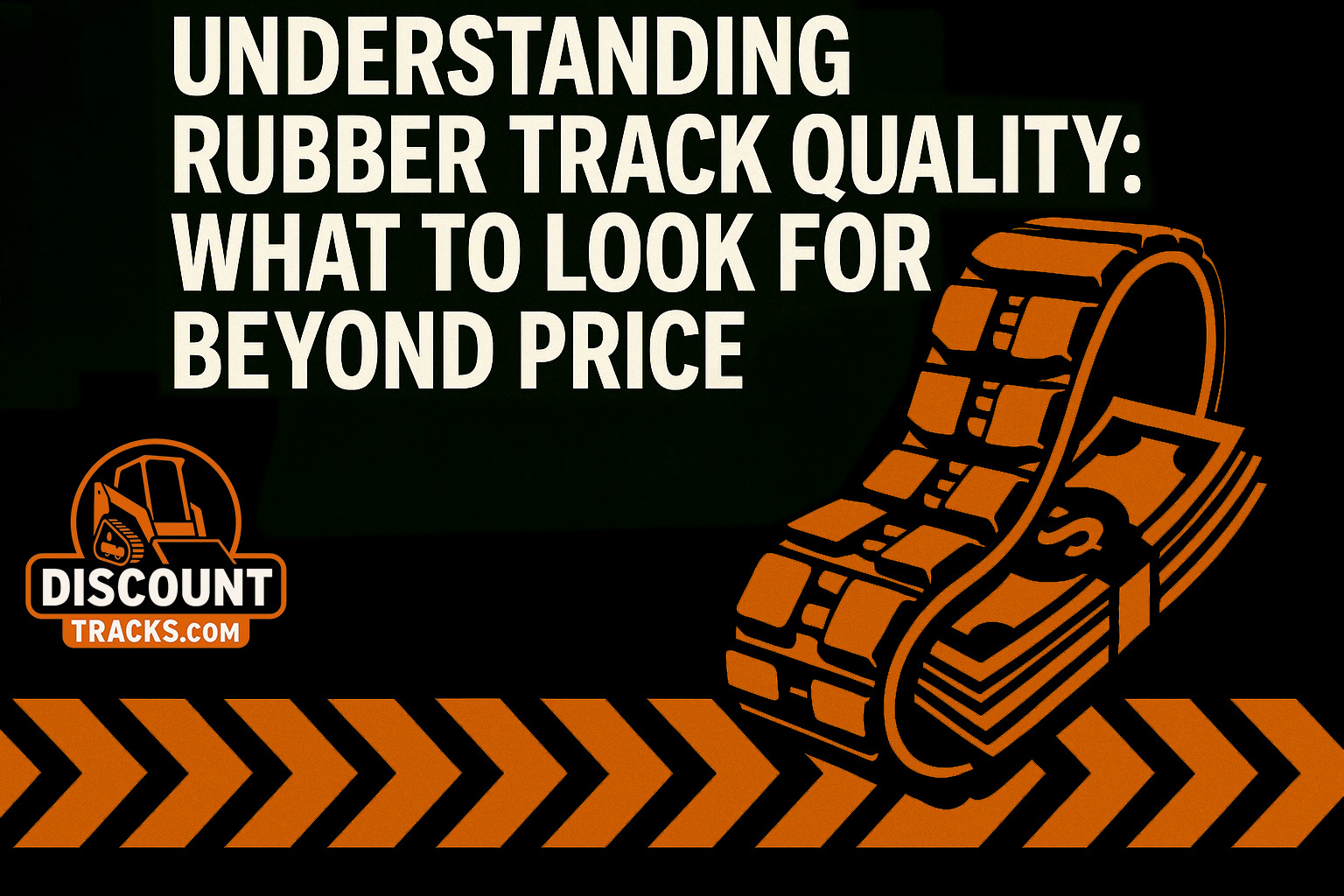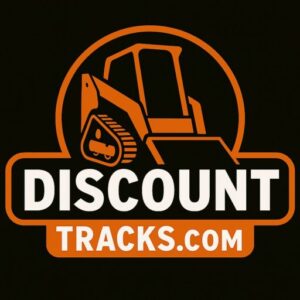When it’s time to replace the rubber tracks on your skid steer, mini excavator, or compact track loader (CTL), it can be tempting to just go with the cheapest option. After all, tracks are expensive—and saving money upfront feels like a win.
But what if that low-cost track wears out in half the time? Or causes damage to your undercarriage? Or fails unexpectedly on the job, costing you in downtime, repairs, and lost productivity?
In this guide, we’ll show you exactly how to evaluate rubber track quality so you can make a smart investment—one that balances durability, performance, and long-term value. And we’ll explain why Discount Tracks offers high-quality, durable rubber tracks at competitive prices, so you never have to sacrifice quality to save money.
Why Quality Matters More Than Just the Lowest Price
The Hidden Costs of Cheap Tracks
Tracks that look the same on the outside can vary dramatically on the inside. Low-quality tracks can lead to:
- Frequent replacement due to premature cracking, chunking, or tread wear
- Downtime and lost productivity if a track fails unexpectedly
- Higher repair costs from undercarriage damage caused by poorly bonded or misaligned inserts
- Operator fatigue and safety issues from inconsistent performance or excessive vibration
Benefits of Investing in Quality
- Longer lifespan means fewer replacements over time
- Better traction and ride comfort for the operator
- Improved equipment health by reducing wear on rollers, sprockets, and idlers
- Lower cost per hour of operation, which improves ROI
Decoding Rubber Track Quality: Key Indicators to Look For
Understanding how a track is made—and what it’s made from—can help you spot real value.
Rubber Compound
- Natural vs. Synthetic Blends: High-quality tracks use a blend that balances flexibility and toughness.
- Additives Matter: UV inhibitors and ozone protectors help prevent premature aging, cracking, and dry rot.
- Tear and Cut Resistance: Look for compounds designed to resist chunking and cuts in rocky or abrasive conditions.
Internal Steel Cords/Cables
- Continuous Steel Cords (CSC): Provide superior alignment and strength compared to segmented cables.
- Cord Thickness and Density: More (and thicker) cords provide better load distribution and longevity.
- Corrosion-Resistant Coatings: Brass-plated or coated cords protect against rust, extending structural integrity.
Metal Inserts/Embeds (Lugs)
- Forged vs. Cast: Forged steel is stronger and more consistent than cast.
- Bonding Strength: Quality tracks use advanced vulcanization techniques to ensure inserts don’t separate from the rubber, reducing de-tracking risk.
- Steel Grade: High-grade inserts resist flexing and deformation under load.
Manufacturing Process & Consistency
- Vulcanization/Curing Control: Proper curing ensures a track that isn’t brittle or overly soft.
- ISO Certification: Indicates consistent quality standards.
- Quality Testing: Includes bond strength testing, wear simulation, and visual inspection of each batch.
Tread Depth and Design Integrity
- Tread Depth: Deeper treads (for heavy-duty or off-road applications) can extend track life.
- Precise Mold Design: Even spacing and accurate lug dimensions improve balance and traction.
The Role of Sizing and Pattern in Overall Track Life
Even a well-constructed track will wear prematurely if it doesn’t fit correctly or is used on the wrong terrain.
- Correct Sizing: Ensures proper tension, reduces de-tracking, and prevents premature wear.
- Proper Tread Pattern: Choose block lugs for hard surfaces, C-lugs for muddy terrain, or turf-friendly treads for landscaping. The right pattern minimizes slippage and extends lifespan.
Explore our track sizing guide to ensure a proper fit.
Understanding the Warranty: A Reflection of Quality
A good rubber track warranty is more than a safety net—it’s a signal of confidence in quality.
- Prorated vs. Full Replacement: Understand whether the warranty provides full coverage or gradually reduced value.
- What It Covers: Manufacturing defects, delamination, premature cracking.
- What It Doesn’t: Abuse, misapplication, or excessive wear from poor maintenance.
Discount Tracks offers competitive warranties on all our products, backed by the same quality indicators mentioned above.
Finding the Balance: Quality, Performance, and Price with Discount Tracks
We believe the real win is in value—not just the lowest sticker price.
- Cost Per Hour: A durable rubber track that lasts 2x longer cuts your cost in half over time.
- Aftermarket Rubber Tracks: Our tracks are rigorously tested and built to match or exceed OEM standards—without the OEM markup.
- Material Sourcing & Construction: We work only with manufacturers that follow strict construction standards and use high-grade materials.
- Expert Support: Our team understands rubber track quality inside and out. We’ll help you choose the right track for your needs and budget.
Conclusion: Invest in Quality to Maximize Value
When evaluating heavy equipment tracks, don’t let the cheapest option fool you. Durable rubber tracks are an investment in uptime, performance, and long-term savings.
By understanding rubber track materials, construction, and quality indicators, you can make a smart, informed decision—and avoid paying more in the long run.
Browse our selection of long-lasting rubber tracks or contact our team for expert advice on choosing tracks that deliver real value.


